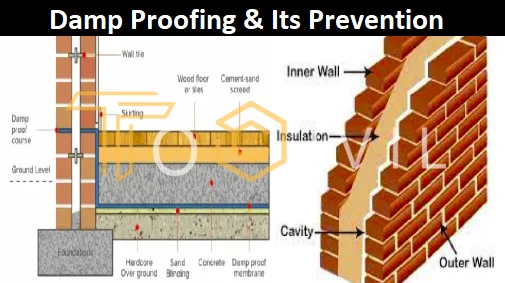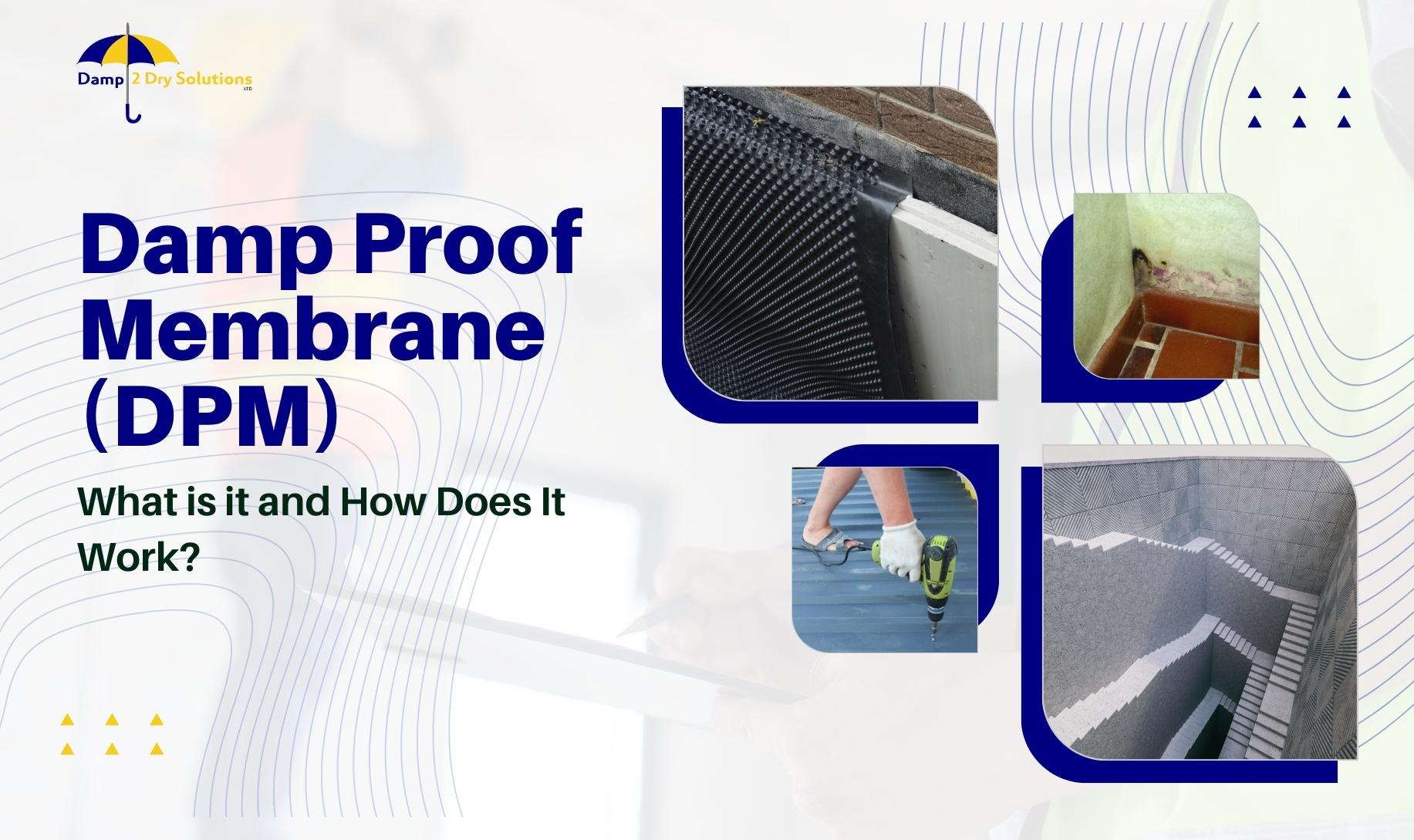Exploring the Various Methods and Solutions for Effective Damp Proofing
Wetness in structures positions considerable difficulties to both structural stability and indoor air high quality. Various methods and services have emerged to combat this pervasive issue. From typical damp-proof membrane layers to cutting-edge chemical therapies, each approach supplies one-of-a-kind benefits. Recognizing these choices is vital for reliable moisture control. Picking the ideal solution depends on details building problems and needs, motivating additional expedition right into the most reliable wet proofing strategies offered.
Understanding the Root Causes Of Moisture
Dampness can develop from different resources, comprehending these causes is important for reliable remediation. Frequently, wetness stems from three main sources: rising moist, penetrating moist, and condensation. Rising damp happens when groundwater takes a trip upwards through permeable materials, such as block or rock, frequently due to a lack of a reliable obstacle (mould treatment newcastle). Passing through damp is commonly caused by exterior variables, including roof leaks, malfunctioning rain gutters, or harmed walls, enabling water to penetrate a building. Condensation, on the various other hand, results from excess wetness airborne, typically aggravated by inadequate air flow and temperature differences, bring about water droplets forming on surface areas. Determining these underlying issues is important, as each sort of dampness requires a tailored strategy for removal. Proper assessment helps in figuring out one of the most efficient remedies, inevitably securing the structural integrity of a building and enhancing indoor air top quality
Traditional Damp-Proof Membrane Layers

Chemical Damp-Proofing Solutions
Chemical damp-proofing solutions supply an ingenious strategy to stop moisture intrusion in structures. These methods normally entail the application of liquid chemicals that penetrate stonework and form a barrier versus increasing wet. Commonly made use of chemicals include silanes, siloxanes, and various other water-repellent representatives that react with surface products to produce a hydrophobic layer.The application process typically calls for drilling openings into the walls, injecting the chemical option, and enabling it to treat. This approach is specifically helpful for older frameworks where conventional damp-proof membranes may be unwise. Chemical damp-proofing can be less turbulent and more affordable than considerable improvement projects.While effective, these options depend on correct application and ecological problems for peak performance. mould removal newcastle. Routine upkeep and tracking are necessary to ensure the long life of the damp-proofing treatment. On the whole, chemical damp-proofing stands for a flexible choice for safeguarding buildings versus moisture-related damage
Dental Caries Wall Construction Methods
Tooth cavity wall surface building strategies offer various advantages, specifically in dampness control and energy performance. By incorporating an air space between 2 layers of stonework, these walls efficiently mitigate water access while boosting insulation. This mix not only safeguards frameworks from wetness however additionally adds to decreased power intake.
Advantages of Tooth Cavity Walls
When considering effective moist proofing methods, the advantages of dental caries walls stand out plainly. Tooth cavity walls include two separate layers, producing an air gap that successfully reduces wetness infiltration. This style decreases the threat of moisture, as the external wall works as a barrier versus rainfall and water ingress. In addition, tooth cavity walls improve thermal insulation, which contributes to power effectiveness by lowering warmth loss. They additionally provide sound insulation, assisting to develop a quieter interior atmosphere. Additionally, the air void enables air flow, which assists in moisture control and lowers the possibility of mold growth. These advantages not just improve the total convenience of a structure but also add to its longevity and architectural integrity.
Wetness Control Strategies
Reliable wetness control approaches are important in cavity wall building to guarantee long-term protection versus wetness. One primary approach entails the consolidation of weep holes, which promote water drain from the cavity, stopping build-up. Additionally, making use of breathable membranes can aid handle wetness levels while allowing trapped vapor to leave. Proper positioning of insulation is additionally essential, as it must not block water drainage paths. Additionally, making sure that the outer fallen leaves of the cavity wall surface are created with water-resistant materials improves general durability. Normal maintenance checks are vital to determine any obstructions or damages early, guarding the structure's integrity. Inevitably, a mix of these techniques forms a robust defense against dampness breach in dental caries walls.
Insulation and Power Performance
Insulation plays a vital role in improving power effectiveness within tooth cavity wall surface building. By including protecting materials, these walls create a thermal obstacle that reduces warm loss and decreases power usage. Reliable insulation not only aids preserve a steady indoor temperature level however likewise mitigates the threat of dampness, as it prevents condensation within the wall surface tooth cavity. Numerous strategies, such as the use of stiff foam boards or mineral woollen, can be employed to accomplish suitable insulation performance. In addition, appropriate installation is necessary to ensure that voids and voids are minimized, which can otherwise jeopardize energy effectiveness. Inevitably, a well-insulated cavity wall surface adds substantially to total sustainability and reduces heating & cooling prices for property owners.
Exterior Damp Proofing Approaches
Exterior moist proofing techniques are essential for safeguarding structures from moisture seepage. Two reliable strategies consist of the application of water resistant membranes and the setup of French drains. These solutions assist alleviate water build-up and maintain the honesty of buildings.
Waterproof Membrane Application
While different techniques exist for preventing wetness ingress, the application of water-proof membranes continues to be a highly effective external damp proofing strategy. These membranes are typically made from products such as polyethylene, rubber, or customized asphalt, providing a durable barrier versus water infiltration. The setup process includes applying the membrane layer to the external surfaces of walls or foundations, making certain full protection to protect against leakages. Appropriate attachment and sealing at joints are essential to here are the findings making the most of efficiency. Water resistant membranes can be used in various types, including liquid finishes and sheet membranes, enabling versatility based upon the certain demands of the framework. This approach not just shields structures from dampness but likewise enhances their long life and structural honesty.
French Drain Installation
One efficient method for taking care of groundwater and stopping moisture build-up around a structure's foundation is the installment of a French drain. This water drainage system is composed of a trench loaded with gravel and a perforated pipe that redirects surface water far from the structure. Correct installment requires careful planning, guaranteeing that the drain inclines away from the structure to facilitate excellent water circulation. Additionally, the area of the drain is important; it should be positioned in locations vulnerable to pooling or excess dampness. Regular maintenance, consisting of clearing particles from the crushed rock and making certain the pipe continues to be unhampered, is necessary for long-term performance. Inevitably, a well-installed French drain can considerably decrease the danger of water-related issues in structures and basements.
Inside Waterproofing Strategies
Inside waterproofing techniques are vital for securing a structure's inside from wetness infiltration and possible water damage. These approaches commonly include the application of specialized products and methods made to develop a dampness obstacle within the framework. One usual method is making use of waterproof coverings or click to read more sealants on wall surfaces and floors, which avoid moisture from penetrating surfaces.Additionally, installing indoor drainage systems, such as sump pumps, can properly take care of water build-up in basements and creep spaces. One more method entails using vapor barriers, which are mounted to inhibit wetness movement from the ground into living spaces.Moreover, attending to any splits or gaps in wall surfaces or structures with appropriate sealers ensures a comprehensive defense versus water breach. By implementing these indoor waterproofing approaches, homeowner can considerably minimize the danger of mold and mildew development, structural damages, and various other moisture-related concerns. Proper execution of these strategies is necessary for long-term defense and structure honesty.
Normal Upkeep and Inspection Practices
Normal maintenance and inspection practices are crucial for assuring the long-term performance of damp proofing options in any kind of building. Routine checks allow residential or commercial property proprietors to identify very early indications of moisture invasion, such as peeling paint, mold development, and moldy odors. These indications can indicate underlying problems that call for prompt attention.Inspections should be conducted a minimum of every year, focusing on vulnerable areas like basements, creep spaces, and outside walls. Throughout these evaluations, homeowner must take a look at sealers, drain systems, and ventilation to validate they work correctly.Additionally, maintaining downspouts and seamless gutters is vital, as clogged up systems can cause water accumulation near the structure. Executing a regular upkeep routine, along with prompt repair work, can substantially expand the life expectancy of damp proofing steps and safeguard the structural integrity of the structure. Aggressive measures eventually add to the overall health and wellness and safety of the living atmosphere.
Often Asked Concerns
How Much Time Does Damp Proofing Typically Last?
The duration of wet proofing effectiveness varies, commonly lasting between 20 to 50 years. Variables such as application high quality, ecological conditions, and upkeep practices significantly affect the durability of the moist proofing treatment.

Can I Damp Proof My Home Myself?
The specific considered the feasibility of do it yourself damp proofing. With proper research and the appropriate products, it is feasible. However, they additionally acknowledged the significance of professional guidance to assure durable performance and avoid future issues.
What Are the Signs of Inadequate Damp Proofing?
Indications of ineffective wet proofing include consistent musty odors, noticeable mold and mildew growth, peeling off paint, wet spots on wall surfaces, and wood degeneration - mould removal newcastle. House owners ought to resolve these issues immediately to avoid additional damages and health and wellness problems
Does Damp Proofing Affect Indoor Air Top Quality?

How Much Does Expert Damp Proofing Price?
Expert wet proofing expenses vary considerably, usually ranging from $1,000 to $5,000 depending on the building's dimension, the level of the moist concern, and chosen techniques. Each situation needs a customized assessment for precise prices. Commonly, dampness stems from three primary resources: increasing go to these guys damp, penetrating damp, and condensation. When taking into consideration reliable wet proofing approaches, the advantages of dental caries walls stand out prominently. External damp proofing methods are vital for shielding frameworks from wetness infiltration. While different methods exist for preventing moisture access, the application of water resistant membrane layers stays a very effective exterior moist proofing method. Indications of inefficient wet proofing consist of consistent moldy smells, visible mold growth, peeling paint, wet spots on wall surfaces, and timber decay.
Comments on “Smart solutions to reduce moisture buildup with mould treatment newcastle”